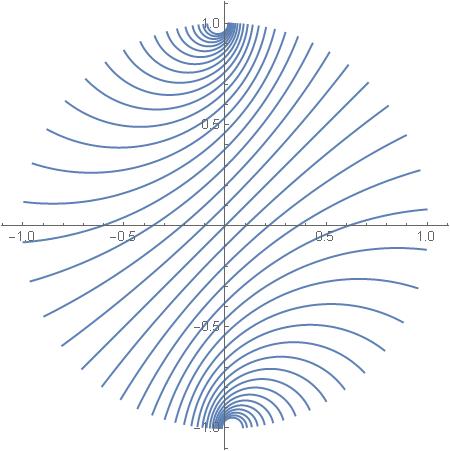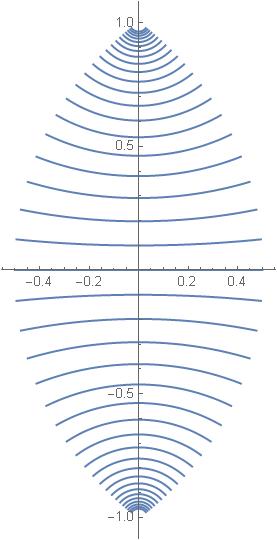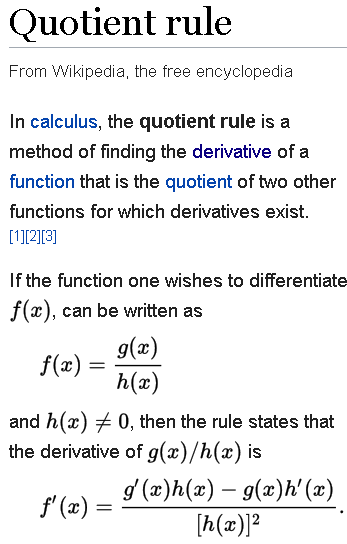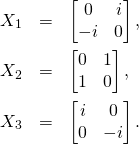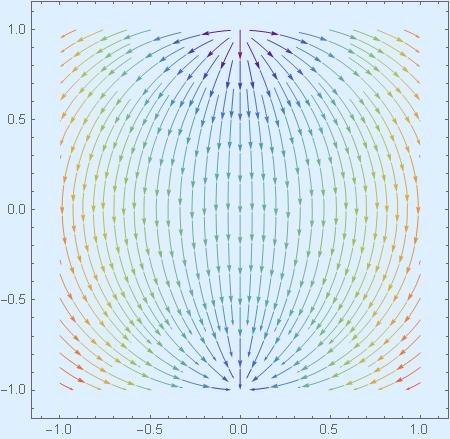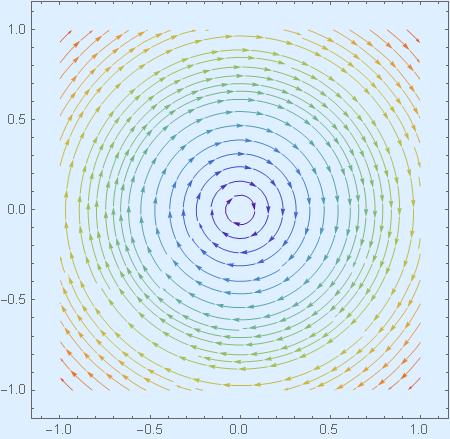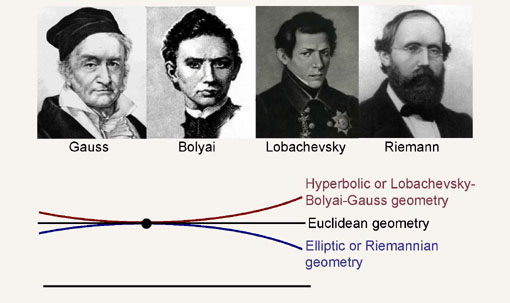In SU(1,1) straight lines on the disk we have seen nice families of parallel straight lines in the hyperbolic geometry of the unit disk of the complex plane. Here is one such family:

Let us recall how was it obtained. We start with a template straight line through the origin ![]() at
at ![]() .
.

Then we take one-parameter group of SU(1,1) transformations ![]() generated by
generated by ![]()
(1) ![]()
(2) ![]()
We apply transformations ![]() to our template straight line (we use fractional linear transformations explained in previous posts), for several different values of
to our template straight line (we use fractional linear transformations explained in previous posts), for several different values of ![]() , and we obtain the family depicted above.
, and we obtain the family depicted above.
Let us take a particular case, with ![]()
We have ![]()
![]() therefore the point
therefore the point ![]() on the template line is transformed into
on the template line is transformed into ![]() given by
given by
(3) ![]()
The whole template line is transformed as follows

We obtain another straight line, parallel to the original one (as the two lines do not intersect). If we rotate this new line clockwise about the origin, at a certain point the two lines touch at ![]() . That is the limit of being parallel. If we rotate further, then the two lines start to intersect.
. That is the limit of being parallel. If we rotate further, then the two lines start to intersect.
Let us calculate the angle ![]() that we need to use to reach the limit. We set
that we need to use to reach the limit. We set ![]() in Eq. (3) and solve for
in Eq. (3) and solve for ![]() such that
such that
(4) ![]()
Solving this I am finding (in radians)
(5) ![]()
Our U(1) rotation group is defined by matrices
(6) ![]()
It acts on complex numbers by:
(7) ![]()
Therefore in order to obtain the limiting line we need to apply ![]()
(8) ![]()
The total transformation ![]() that we will use is therefore
that we will use is therefore
(9) ![]()
Acting on the point ![]() on the real axis it produces a point
on the real axis it produces a point ![]() in the disk
in the disk
(10) ![]()
![]()
The real part, ![]() vanishes for
vanishes for ![]() The imaginary part has, for this
The imaginary part has, for this ![]() the value
the value ![]() . That means that at
. That means that at ![]() the limiting line crosses the vertical imaginary axis.
the limiting line crosses the vertical imaginary axis.

We could easily repeat the above reasoning applied, this time, to the left point ![]() We would get the second limiting line. The two lines cross at
We would get the second limiting line. The two lines cross at ![]() , as shown below:
, as shown below:
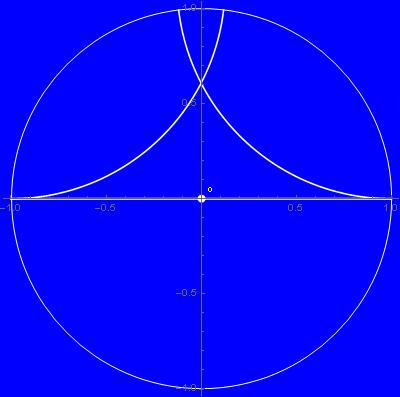
We will continue our adventure in the next post. We will produce there this image of parallel lines – the Angel of Geometry

